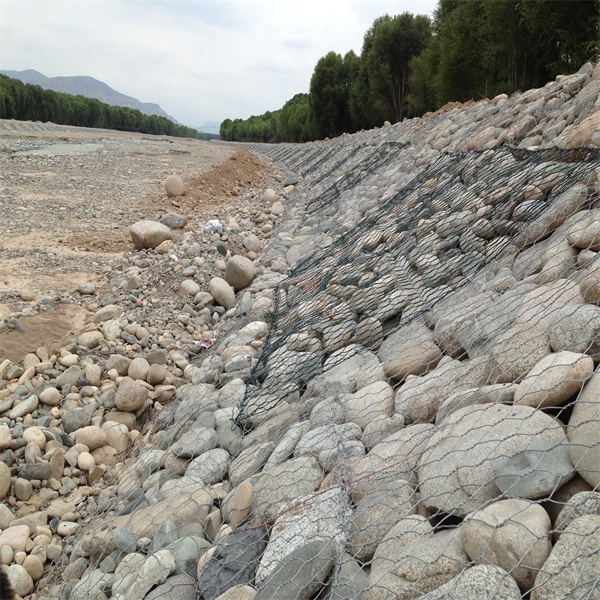нов . 05, 2024 06:15 Back to list
best gabion wall with wood
Building the Best Gabion Wall with Wood A Perfect Combination of Strength and Aesthetics
In recent years, gabion walls have emerged as a popular choice for landscaping and retaining walls. These structures, crafted from wire mesh cages filled with stones, not only bring strength and resilience to a landscape but also offer an element of natural beauty. When combined with wooden elements, gabion walls can create a visually striking and harmonious blend of materials that enhance the overall appeal of outdoor spaces. This article explores how to build the best gabion wall with wood, detailing the materials, techniques, and benefits of this approach.
Understanding Gabion Walls
Gabion walls are constructed from mesh cages filled with stones, rocks, or even recycled materials. They serve various purposes, including erosion control, landscaping, and providing support for slopes. Their porous nature allows water to drain, reducing hydrostatic pressure and preventing damage during heavy rains. Additionally, gabion walls are environmentally friendly since they can utilize locally sourced stones and materials.
Materials Needed
To build a gabion wall with wooden features, you’ll need a variety of materials
1. Gabion Baskets These are available in various sizes, typically made from steel wire, with galvanized or PVC coating to prevent rust. 2. Filling Material Choose durable, weather-resistant stones, preferably with a size of 4 to 6 inches for optimal stability.
3. Wood Panels or Beams Depending on your design, use treated wood that is resistant to rot and decay. Cedar and redwood are popular choices due to their natural resistance to weathering.
4. Cement or concrete Use this for securing any wooden components or fixing them into the ground if necessary.
5. Tools Essential tools include gloves, a shovel, a level, wire cutters, and a hammer.
Building Process
1. Planning and Design Before diving into construction, sketch your design. Deciding on the height and length of the gabion wall is crucial, as well as planning how and where the wooden elements will be integrated, whether as posts, panels, or beams.
best gabion wall with wood

2. Site Preparation Choose a location that is suitable for a gabion wall, usually at the base of a slope or as a boundary line. Clear away any vegetation, rocks, or debris and level the ground where the wall will be placed.
3. Laying the Gabion Baskets Begin by assembling the gabion baskets according to the manufacturer's instructions. Ensure they are stable and level before filling them with stones. It might be beneficial to fill the baskets with larger stones at the bottom for stability and smaller stones at the top for aesthetics.
4. Integrating Wooden Elements Depending on your design, you may want to place wooden beams vertically or horizontally along the gabion wall. Secure the wooden components to the gabion baskets using wire, nails, or brackets, ensuring they are level and properly aligned. This combination not only adds structural support but also enhances the visual appeal of the wall.
5. Finishing Touches After assembling the wall, you can treat the wooden components with sealants or stains to protect them from moisture and insects. Consider planting climbing plants or placing flower beds at the base of the wall to soften the edges and create a more inviting look.
Benefits of a Gabion Wall with Wood
Combining gabion walls with wood offers numerous advantages
- Aesthetics The mix of metal, stone, and wood creates a visually appealing contrast that can blend well with natural surroundings.
- Durability Gabion walls are incredibly resilient against weather and erosion, while treated wood adds a strong structural element.
- Eco-Friendliness Both materials can be sourced sustainably, making this combination an environmentally responsible choice.
- Versatility Gabion walls with wood can be tailored to suit various architectural styles, from rustic to modern.
Conclusion
Constructing the best gabion wall with wood is an excellent way to combine functionality with beauty in your outdoor space. This versatile approach not only enhances the structural integrity of the wall but also provides an opportunity to express creativity through design. Whether you’re looking to create a garden boundary, a retaining wall, or simply a decorative feature, a gabion wall with wood can fulfill both practical and aesthetic needs. With careful planning and execution, you can enjoy the benefits of a stunning landscape feature that will stand the test of time.
-
The Role of Galvanized Gabion Mesh in Riverbank Protection
NewsJun.26,2025
-
The Role of Gabion Basket Raised Bed in Sustainable Gardening
NewsJun.26,2025
-
Quality Assurance of Wire Mesh Gabion Baskets
NewsJun.26,2025
-
Installation Guide for Welded Gabion Box
NewsJun.26,2025
-
How to Choose the Right Gabion Box
NewsJun.26,2025
-
Different Types of Gabion Wire Mesh
NewsJun.26,2025
-
Why PVC Coated Gabion Mattress Is the Best Solution for Long-Term Erosion Control
NewsMay.23,2025






